Chinese Food Therapy
1. Chinese Medicine Theory for food therapy
Chinese medicine also divide food into five tastes: sour, bitter, sweet, spicy and salty. Each bite of foods sends the nutrition to corresponding organs. It is very important to know in Chinese medicine, organs are functionally defined entity and not equivalent to anatomical organ of the same name in west medicine. For example, Western medicine defines heart as a organ to pump blood into circulation. Chinese medicine think heart is a organ to store soul and mind, to control emotion, and to governs blood and meridians. Each organ has their own taste. For example, liver’s taste is sour. Heart’s taste is bitter. Sour food enters liver to stop sweating and eases coughing. Salt enters the kidneys to drain, purge and soften masses. Bitter food enters the heart and the small intestine to help cool heat and dry any dampness. Spicy food enters the lungs and large intestine to stimulate appetite. Sweet food enters the stomach and spleen to helps lubricate the body.
In traditional Chinese medicine, foods are divided into five group based on temperatures: cold, cool, neutral, warm and hot. This classification is determined on effects of food on body rather than nature of food actual temperature. Warm and hot food such as beef, coffee, ginger, hot chilies and fried foods, can bring heat to the bodies. The cold and cool foods such as salad, cheese, green tea, mung beans and beer, can cool down the bodies, There are also neutral foods, such as rice, pork and most kinds of fishes.
Chinese medicine concludes six excesses of pathogenic factors: Wind, Cold, Heat, Dampness, Dryness and Summer-heat. Any excess can creates an imbalance in body causing people sick. When people have more heat in their body, they usually feel hot, sweats and grumpy, and become sick. For example, “liver fire” (too much heat in the liver) can cause headache, hypertension, reddened eyes, dry mouth, constipation, and irregular menstruation. Eating cold or cool food, like mung beans, will help to reduce the hot symptoms. When people have colder in their bodies, they will feel cold on hands and feet, weakness and fatigue, and bad blood circulation. Too much cold in the bodies cause people cough, sinus, congestion, common cold, flu and pneumonia. Eating hot food, like Ginger, will help to reduce those cold symptoms.
The season is another factor for food choices. Spring is considered wet and sticky so that dampness easily accumulate in the body. Food such as corn, white beans and onion can take the dampness away. In Summer, watermelon and cucumber can cool down our body. Autumn is dry. Foods such as snow peas and honey are good. Winter is cold, eating hot food such as beef or shrimps warms up the body.

Good or bad food depends on each person’s personalities. For example, a overweight person is considered too much dampness in their body by Chinese Medicine. Eating sweet foods accumulates more dampness in the body. The ginger tea is hot food to warm up the body. It is good for the person who suffer from cold. However, ginger is not good the person with hypertension, which is considered too much fire in the liver by Chinese medicine, because singer adds more heat to the body to make the condition worst.
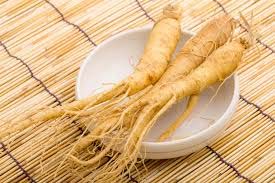
1. Ginseng
Ginseng increase strength, blood volume, appetite, quite the spirit, and give wisdom, treats anemia, poor appetite, shortness of breath, nervous agitation, forgetfulness and thirst. Ginseng is an antioxidant, which helps rid the body of free radicals. There is also some evidence that ginseng boosts the immune system, which can help the body fight off infection and disease. It is very important that Ginseng can improve Qi, which is vital energy in the body. Chinese medicine believer person is ill because Qi is week, When the Qi is completely exhausted, death will occur. For this reason, ginseng is often used as a second line of defense in emergency situation especially for shock and coma in where patient is inability to supply enough oxygen and blood for organ need.
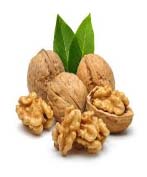
2. Walnuts
Properties of Walnuts are warm and sweet, which can tonify kidney yang and nourish lungs. Walnuts is used to treat sexual dysfunction, frequent urination, lower back pain, cough and cold.
Walnuts are also chock full of goodness as well, including omega-3 fatty acids, vitamin E and folates – all of which aid the heart and brain. The Chinese have long believed that eating walnuts can sharpen the mind and boost concentration and memory. It is considers walnuts as a warming food so it is a great snack in winter time.
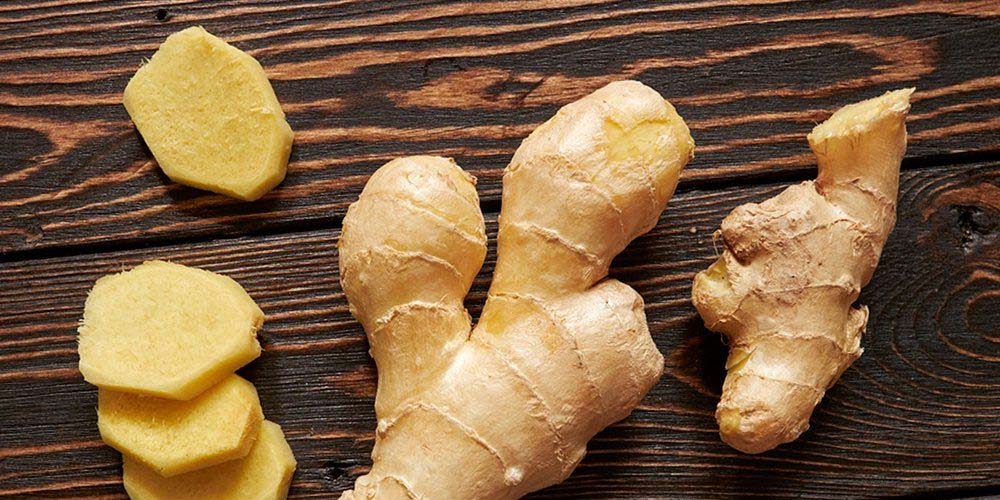
3. Ginger
Ginger is considered a warming herb and acts specifically on the lung, spleen and stomach. Ginger can be used to treat phlegm in the lungs accompanied with cough. Ginger promotes circulation as well as sweating, so that is used to treat joint pain due to cold. Ginger also be used for digestive problems due to yang deficiency (warming energy of body).
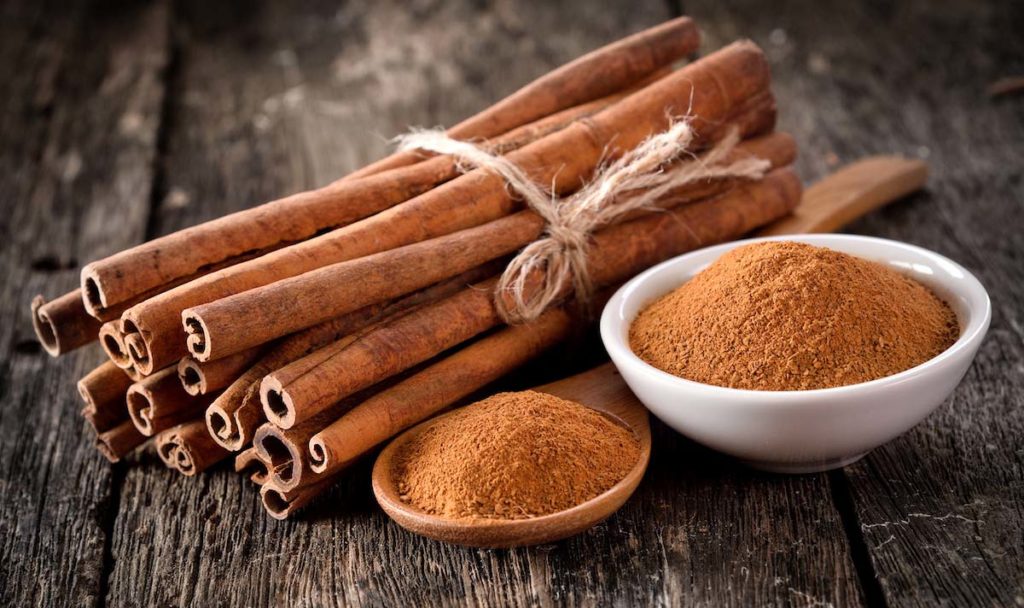
4. Cinnamon
Properties of Cinnamon is spicy, sweet and powerfully warming. It has ability to penetrate the heart, lung, bladder meridians. Therefore Cinnamon warms the body, invigorate the circulation, and harmonize the energy of the upper and lower body. Modern studies demonstrate that cinnamon helps to reduce allergic reactions and increases circulation.
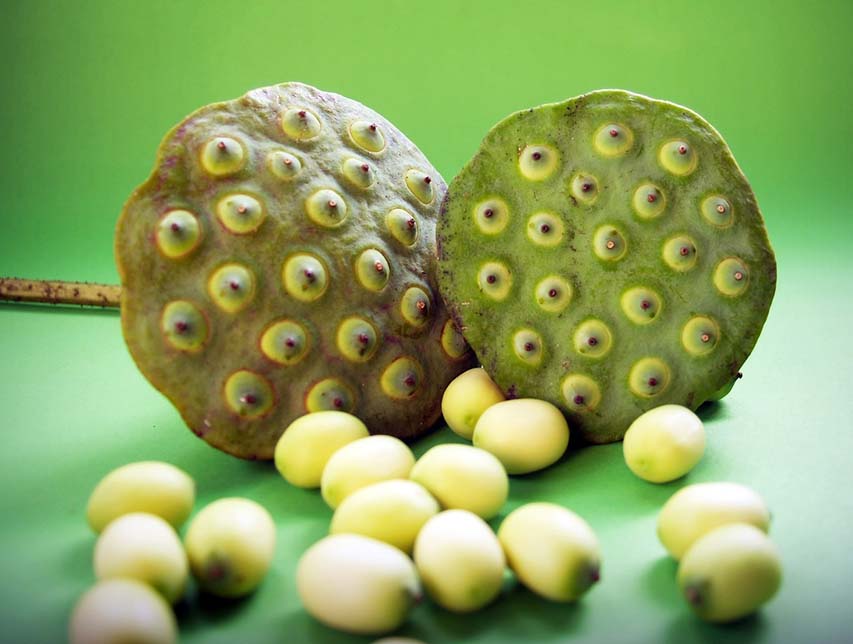
5. Lotus seed
Properties of lotus seed is sour and sweet. Its meridian affinities are spleen, heart and kidney. Its functions are to tonify the spleen, strengthens the kidney, nourish the blood and calms the mind. In clinic, it be used to treat premature ejaculation, spermatorrhea, abnormal uterine bleeding, vaginal discharge, palpitations, insomnia, anxiety, restlessness, and diarrhea
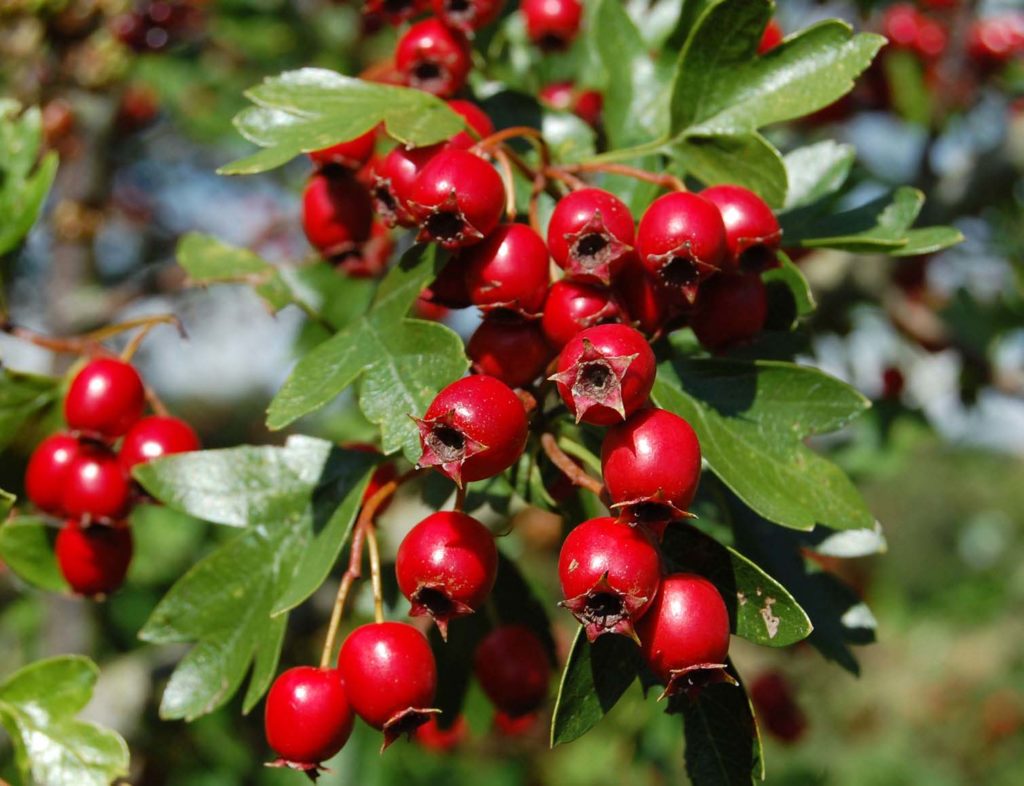
6. Hawthorn berries
Properties of hawthorn berries is warm, sour and sweet. Its meridian affinities are spleen, stomach, heart, and liver. Its functions improve digestion, reduce food stagnation, increase blood Qi, reduce body fat. In clinic, it be used to treat hypertension, heart diseases, abdominal pain, abdominal bloating, abdominal colic, amenorrhea, hernial pain, and hyperlipidemia.
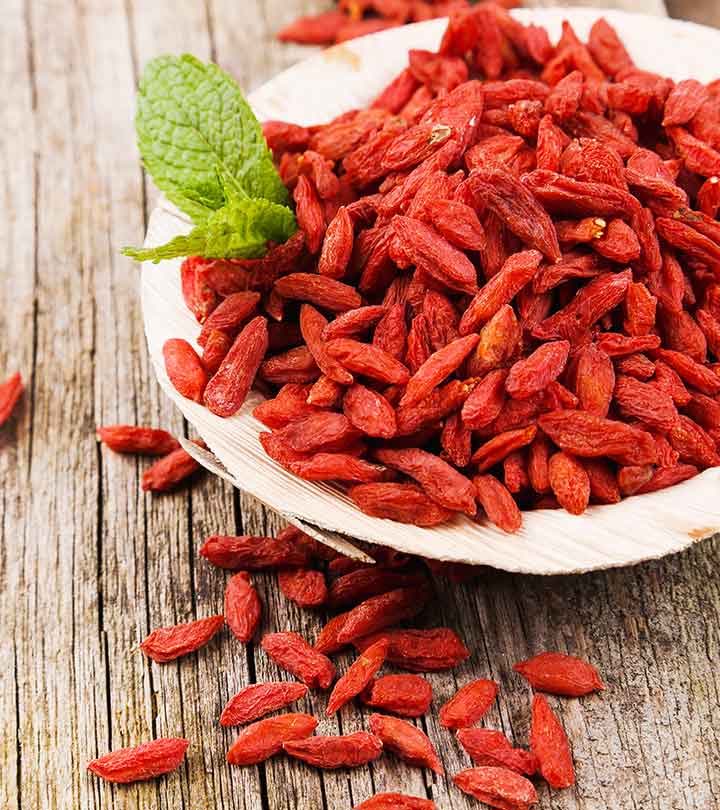
7. Goji berries
Properties of Goji berries is neutral and sweet. Its meridian affinities are kidney and liver. Its functions are to tonify the Yin of liver and Kidneys, brighten the eye, and moisten the lung. In clinic, it be used to treat kidney essence deficiency such as spermatorrhea, premature ejaculation, weak and low sperm, headache, tinnitus, lower vision, dizziness, weakness and pains in back and keen, poor appetite, fatigue, gray hair and premature aging.
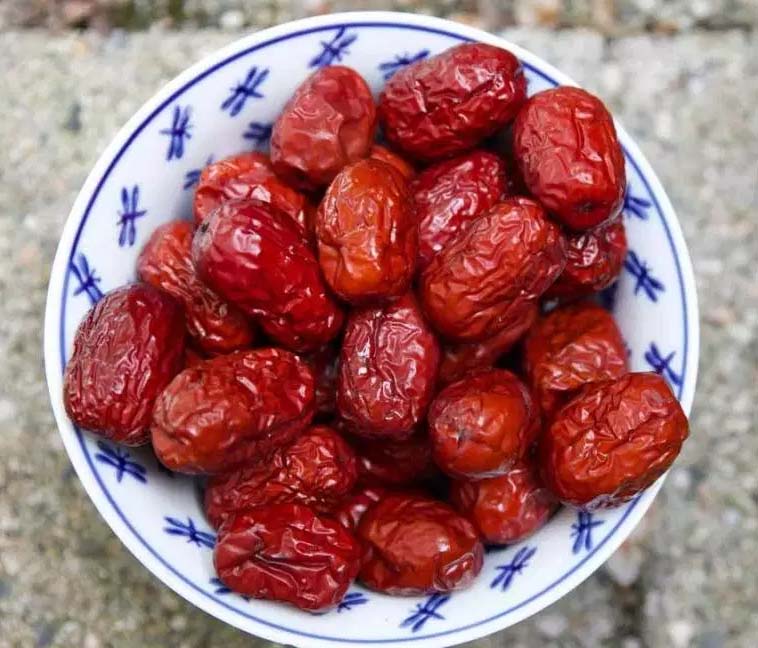
8.Jujube dates
Properties of Jujube date is warm and sweet. Its meridian affinity is spleen and stomach. Its function is to tonifies the spleen and stomach Qi, tonifies blood, calms the spirit, moderates the actions of other herbs in formula.In clinic jujube fates are used for insomnia, palpitation restlessness, poor appetite, fatigue and diarrhea. Jujube dates are also rich in calcium, phosphorus and potassium, which are great for nourishment and the fiber improves digestion as well. Winter time when steeped with red sugar and jujubes.
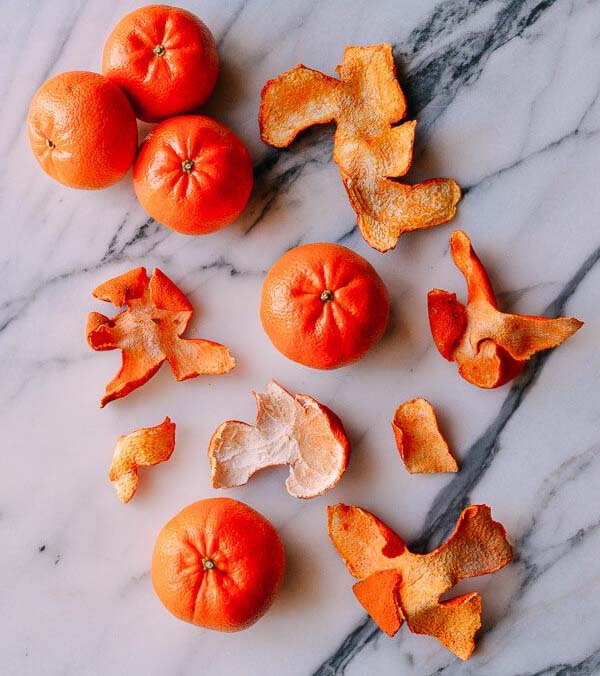
9. Aged mandarin peel
Mandarin tangerine peels, after being sundried, are often used as a warming agent to help the functions of the spleen and stomach, and balancing qi. Like the citrus fruit itself, mandarin peel is also rich in vitamin C, and antioxidants , which means more fighting off of free radicals. Mandarin peels also are used in teas, as well as a flavoring in stir fries with meat.
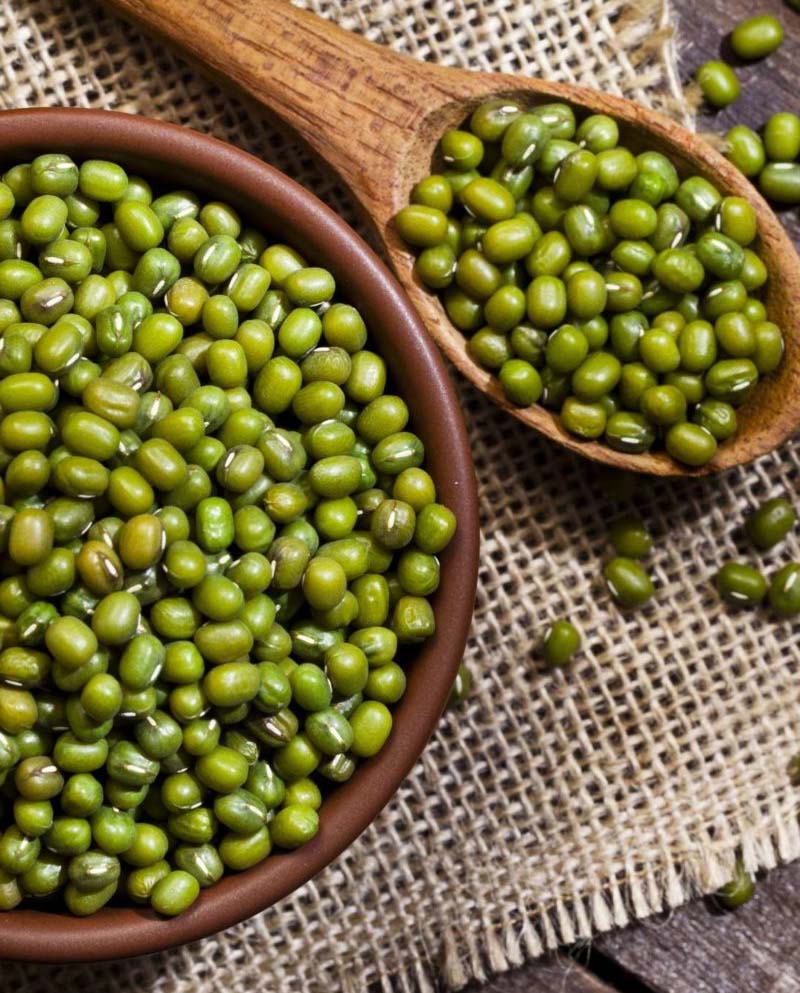
10. Mung beans
Properties of mung beans are cool in nature and sweet in taste. Its meridian affinities heart and stomach. Function of mung beans are to clear heat, promote urination, lower blood pressure and cholesterol, to clear pesticide and food poisoning, and treat alcoholism and burns. Mung beans are good for summer heat because mung beans can clear internal heat and toxins.
Mung beans are nutritional powerhouses which packed with potassium, magnesium, folate, fiber, and vitamin B6, So Mung beans help to smooth over mood swings and control stress. Its fiber also helps to regulate digestion and constipation.
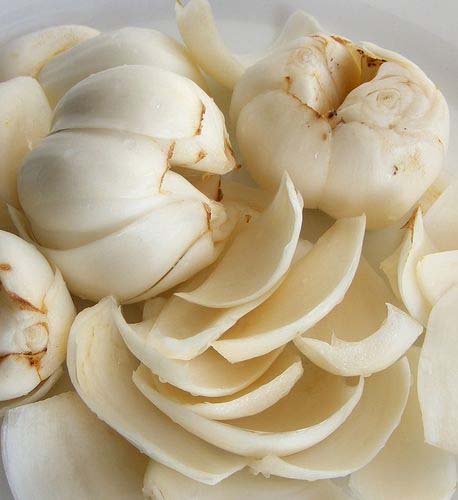
11. Lily bulbs
According to Chinese medicine, the properties of lily bulbs is sweet and slightly cold, which use to clear body heat away. Lily bulbs are associated with the Lung and Heart meridians. Therefore, Lily bulbs are used to treat lung meridian disorders such as coughs, dry throats, other respiratory conditions, and heart meridian disorder such as anxiety, insomnia, heart palpitations, restlessness and irritability.
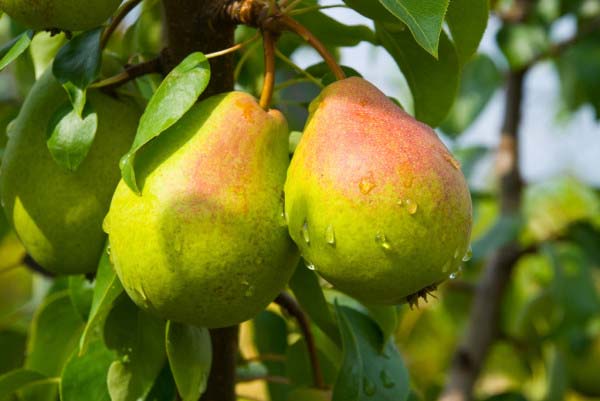
12. Pears
Pears are sweet and cold in nature. Pears moisten the lungs and large intestines. When pears are used for lung meridian disorder such as acute and chronic bronchitis, coughing with or without sputum, pears need to be stewed or steamed with crystal sugar. Pear tea can also help with clearing hot phlegm from a cough. Eating raw pears or pears with skin before meal (an empty stomach) is good for constipation (large intestines disorder).
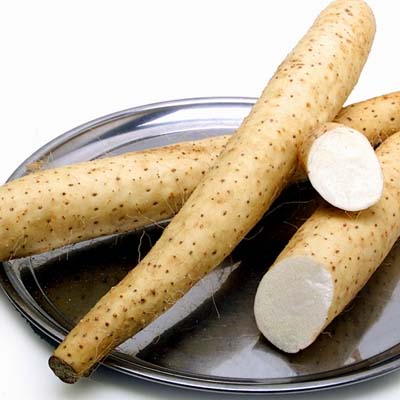
13. China yam
In Chinese medicine, the functions of Chinese yam are:1) Strengthening the spleen and stomach to help balance spleen-yang and stomach-yin deficiency. Therefore, clinically it treats loss of appetite, body fatigue, diarrhea and other diseases. 2) Nourishing kidney and enriching essence to make body stronger, increase sperm count and quality. In clinic, it is widely used for impotence, nocturnal emission, abnormal vaginal discharge, frequent urination, and more. 3) Benefiting lung. In clinic. It is used to treat chronic cough due to lung deficiency and phlegm. 4) Lowering blood sugar. Fresh yam contains mucus protein that can lower blood sugar. Therefore, it is a good diabetic diet. 5) Promoting longevity. Raw yam contains a lot of mucus protein, vitamins and trace elements, which can effectively stop the precipitation of lipids in the blood vessel wall to prevent cardiovascular. 6) Preventing hepatic coma. Recent studies have found that it is with sedative effect and can be used to prevent hepatic coma. 7) Soothing mood and regulating sleep. Unlike ginseng, the medicinal properties of Chinese yams are quite mild and slow. And it can soothe mood and adjust sleep while regulating the function of spleen.
3. Two Soups Recipes that most use in Chinese food therapy
(1) Pear soup
1) Function: This dessert can reduce excessive phlegm to effectively ease coughs caused by the common cold. It is the most popular dessert in the cold seasons in China.
2).Ingredients: Pear, crystal sugar, Geji Berry, Jujube
3) Instructions: There are two ways to cool pear soup
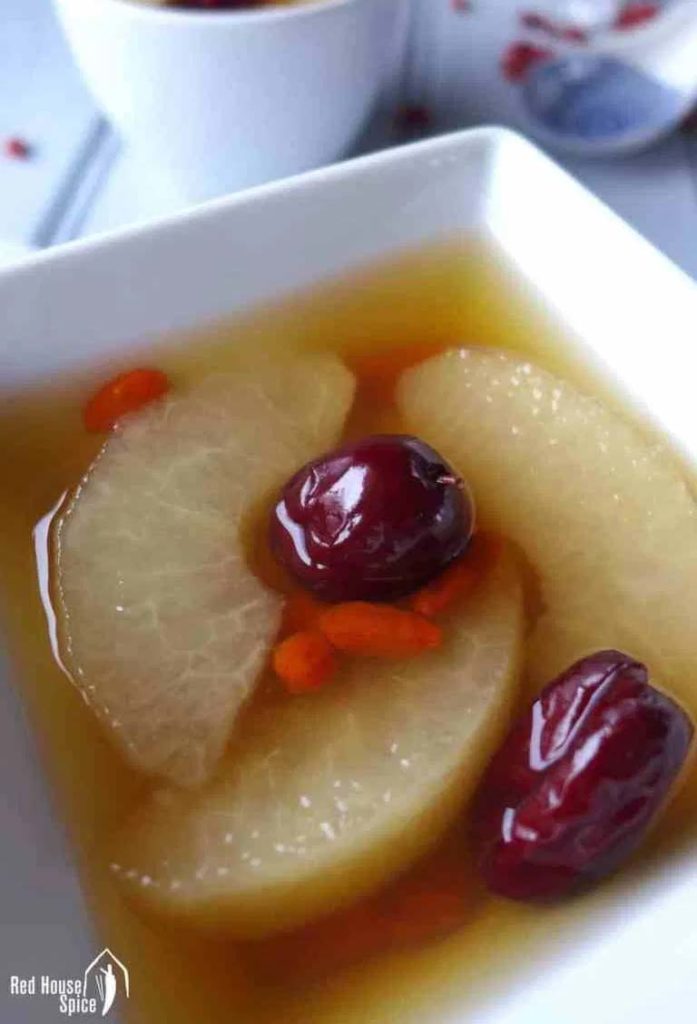
Method 1: To boil the pears
(1).Remove the cores of the pears then slice them the way you like.
(2).Add pear and all the other ingredients into a pot.
(3)Firstly cook on high heat, and change to light heat when the water starts boiling.
(4) Continue to cook for 15 minutes.

Method 2: To steam the pears
(1) Cut off the top part of the pears (about 1/5 to 1/4 of the total height).
(2) Use a teaspoon to remove the cores. Fill the holes with rock sugar and half of the Goji berries.
(3) Put the top part back (you can use toothpicks to stabilize the two parts) then put the pears vertically into 2 small bowls.
(4) Sprinkle the remaining Goji berries around the pears. Steam on medium heat for about 40 minutes
(2) Bloack Chicken Soup
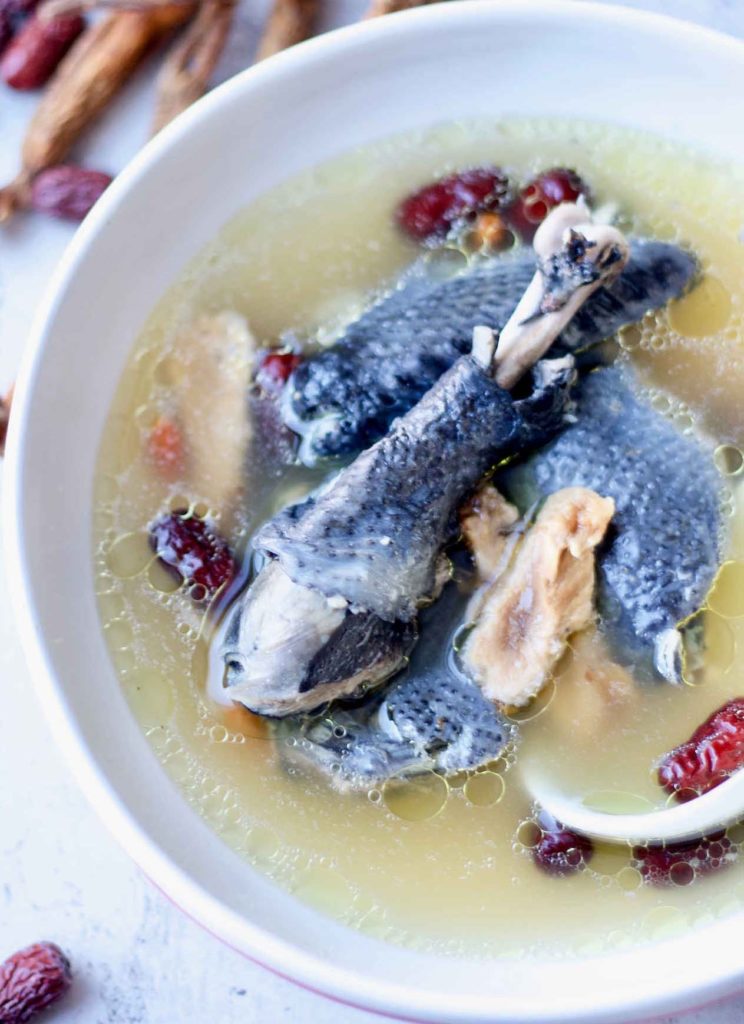
1) Function:
According to the Chinese medicine, the black chicken can help to boost the immune system, increase female fertility, and nourish a pregnant women and also good food for old people. Researchers said silkie chicken has full of antioxidant which helps to keep your health, prevent sickness and common colds.
2) Ingredients0ne
Silkie chicken (black chicken), two medium ginseng roots, two inch ginger root, sliced, twenty dry jujubes, two tbsp goji berries, one tsp sea salt or to taste, 1/2 cup rice cooking wine (or any wine).
3) Instructions
(1) Cut the whole chicken into small pieces by separating between the bones.
(2) Submerge the chicken in a pot of cold water, then bring the pot to a boil. Heating up the water and chicken together will bring out the most impurity.
(3) Let the water boil for a couple minutes. There should be foam and scum floating on the surface of the water. Turn off heat. Discard this batch of water.
(4) Rinse the chicken pieces to remove any scum that may be stuck on the chicken. If re-using the same pot to make soup, rinse the pot to remove any stuck-on scum as well.
(5) Fill a clean soup pot with 10 cups of clean water. Add the clean chicken pieces, sliced ginger, and 2 medium ginseng roots. Boil and simmer with lid on for 1 hour.
(6) Remove the ginseng roots from the soup, they should be softened now. Cut the ginseng roots into slices, then add them back into the soup pot. Add 20 clean jujubes (red dates), then simmer for another 30 minutes.
(7) Add 1/2 cup of rice cooking wine, 2 tbsp of goji berries into the soup pot. Season with sea salt to taste, about 1 tsp. The soup shouldn’t taste salty, and it should be slightly sweet. Simmer for another 15 minutes, remove from heat.
